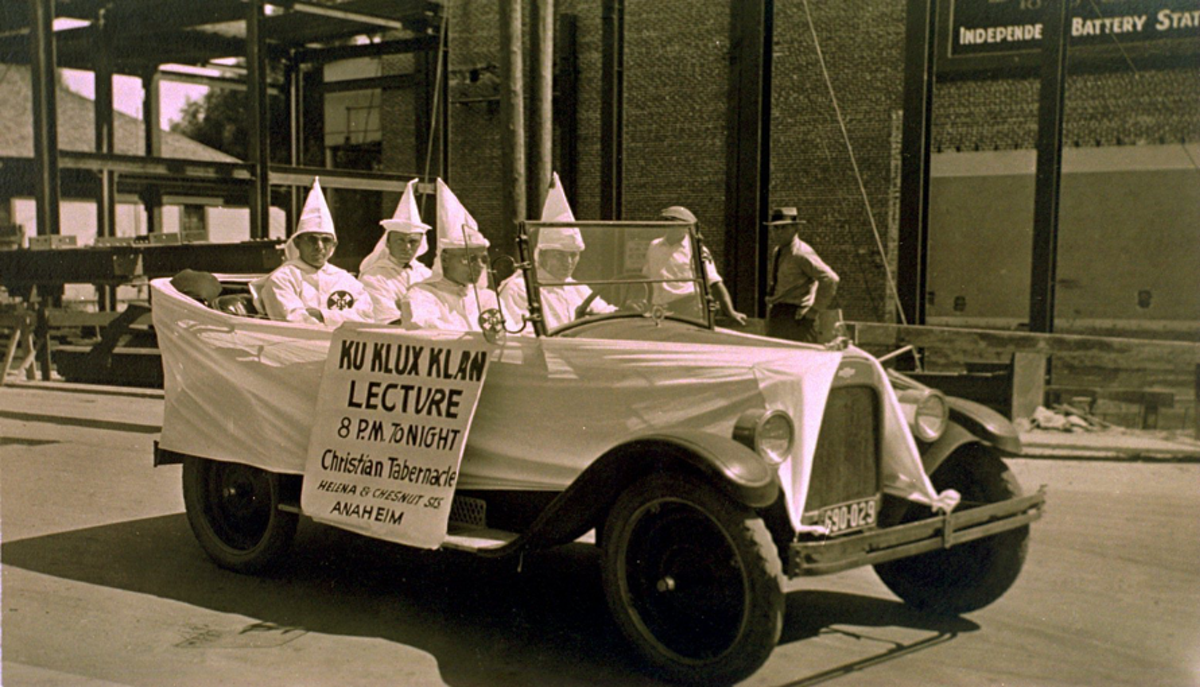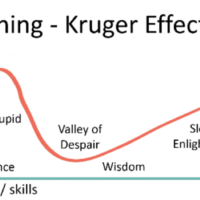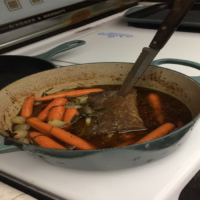So now we’ve familiarized ourselves with three tactics used by people in authority to overpower those around them, including:
- Milgramming, the abuse of authority to change good people into bad people.
- Gaslighting, the abuse of authority to make smart people think they are crazy, and
- Dunning-Krugering the abuse of authority to transfer confidence and power from the competent to the incompetent.
We will now look at a case study, the 1924 Anaheim Ku Klux Klan which is the backdrop for my novel, The Anaheim Beauties Valencia Queen. As I did research for the novel, three items jumped out at me.
In today’s jargon, the Klan in Anaheim in 1924 was a Ponzi scheme empowering a virtue-signaling call-out culture to use public shaming and occasional violence to destroy those perceived as threats,
First, membership in the Ku Klux Klan wasn’t cheap. A $23.30 Klecktoken for initiation, robe, and first-year annual membership) in the 1920s equates to $340 today. A Harvard University study estimates “at the peak of (the 1920s) Klan, initiation fees, dues, and profits from robes in … Indiana alone generated nearly $4.4 million (in 2011 dollars) annually for the national Klan leader, $2.6 million for the head of the Indiana Klan, and over $330,000 each for the national head salesman and the salesman responsible for Indiana. Per capita income in the United States at this time was roughly $8,700 in 2011 dollars. More than a terrorist organization, the 1920s Klan could be described as a wildly successful multi-level marketing entity fueled by an army of highly incentivized sales agents and an unprecedented interest in fraternal groups of all kinds.”
For more on this, see:
Second, to incentivize membership in the Ku Klux Klan, Kleagles (recruiters) were trained to amplify the despair of potential recruits, then claim Klan membership was the logical response to counter illegal behaviors contributing to middle-class miseries. In today’s jargon, the Klan in Anaheim in 1924 was a Ponzi scheme empowering a virtue-signaling call-out culture to use public shaming and occasional violence to destroy those perceived as threats, including those believed to have violated Prohibition law.
In Anaheim, Millgramming incited a mob of 20,000 Klansmen, (nearly twice Anaheim’s population in 1924) from throughout Southern California and Arizona to turn against Catholics (who were known to indulge in occasional tipples). In the name of Anaheim’s law-abiding citizens who supported Prohibition, Klansmen set fire to a cross in front of Saint Boniface Catholic Church, burning down trees and attempted to destroy the building. I’d write more, but I don’t want to undercut my novel except to say it didn’t end well for the Klan, save for those millionaires who’d mastered monetizing misery.

I’ll have more to say about this in my next post when I’ll talk about the third item that jumped out from my research.





